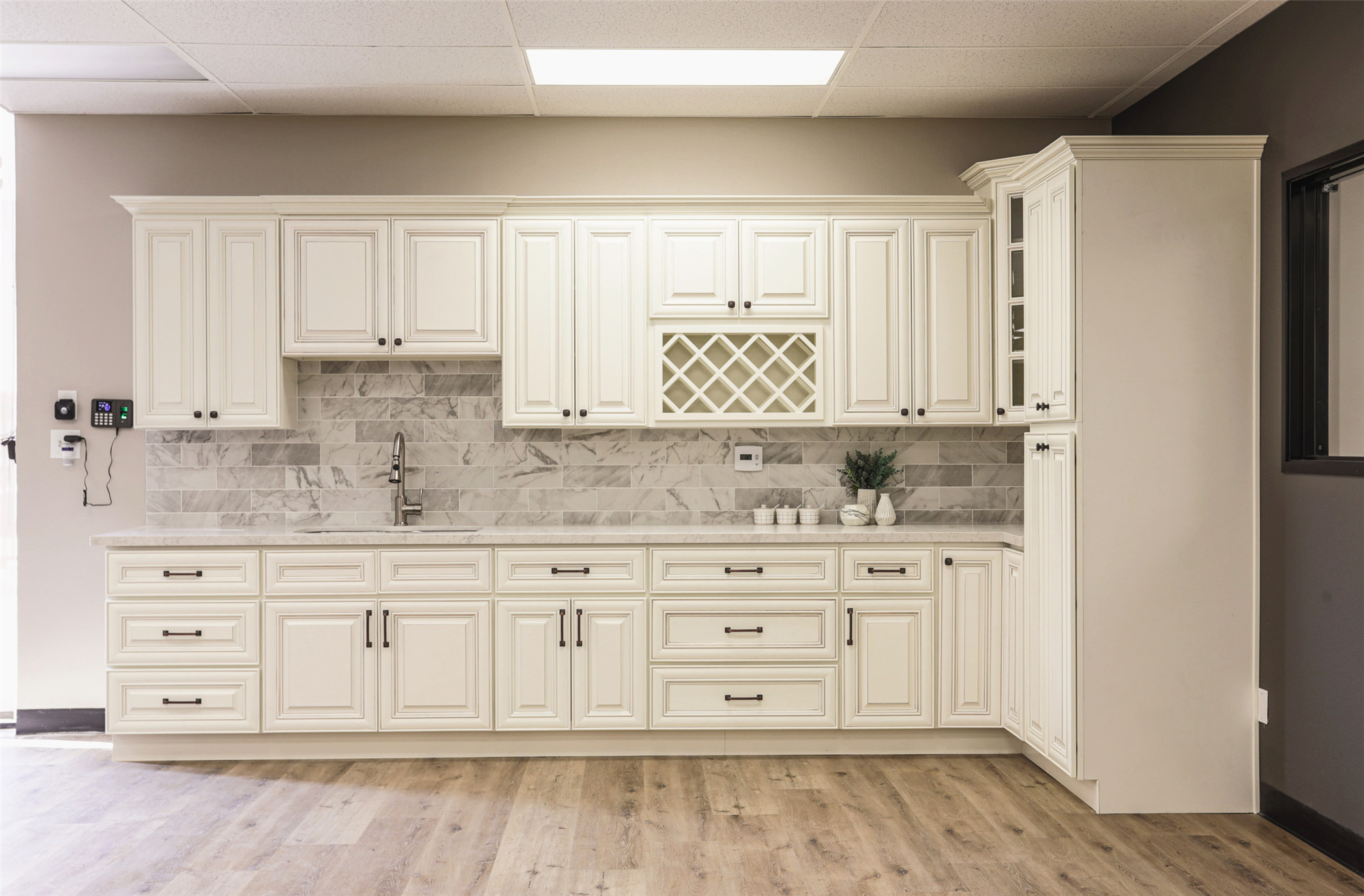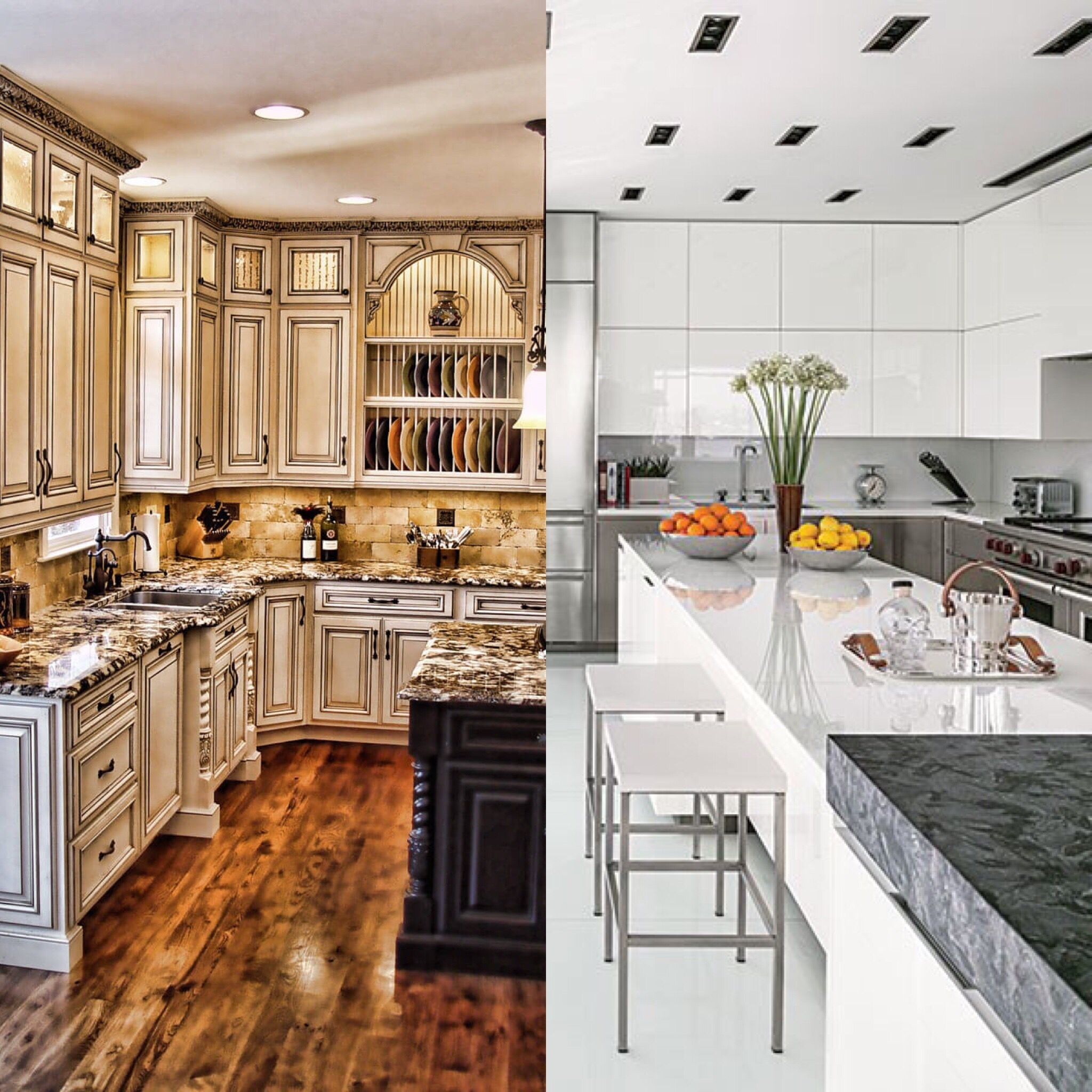The Allure of Antique White Kitchen Cabinets

Antique white kitchen cabinets offer a timeless elegance that transcends fleeting trends. Their enduring appeal stems from a versatility that allows them to seamlessly integrate into a wide range of design aesthetics, from classic farmhouse to modern minimalist. This enduring popularity makes them a smart investment for homeowners seeking both style and longevity.
Design Features and Aesthetic Appeal of Antique White Cabinets, Antique white kitchen cabinets
The visual appeal of antique white cabinets is multifaceted. Common design features, such as raised panel doors, contribute to a sense of traditional craftsmanship and sophistication. Shaker-style cabinets, with their clean lines and simple detailing, offer a more understated elegance, while beadboard accents add a touch of rustic charm. The antique white finish itself softens the overall look, creating a warm and inviting atmosphere. The subtle variations in tone inherent in many antique white finishes prevent the cabinets from appearing stark or sterile, adding depth and character. This subtle textural variation, often achieved through distressing or glazing techniques, distinguishes antique white from a stark, bright white, making it far more adaptable to different design styles.
Antique White vs. Other Popular Cabinet Colors
While gray, navy, and cream cabinets each enjoy periods of popularity, antique white maintains a consistent presence. Gray cabinets, often chosen for their modern sophistication, can feel cold in insufficiently lit spaces. Navy cabinets, while striking and dramatic, require careful consideration of overall color palettes to avoid a feeling of claustrophobia. Cream cabinets, while similarly warm to antique white, often lack the depth and visual interest provided by the subtle variations in tone found in antique white finishes. Antique white provides a happy medium, offering warmth without being overly saccharine, and versatility without being bland.
Mood Boards: Three Kitchen Styles Featuring Antique White Cabinets
The adaptability of antique white cabinets is best demonstrated through diverse design applications. Consider these three distinct kitchen styles:
Rustic Farmhouse Kitchen
Imagine a kitchen bathed in warm, natural light. Antique white shaker-style cabinets, complemented by a reclaimed wood countertop with a worn, distressed finish, create a sense of comfortable, lived-in charm. A white subway tile backsplash, subtly offset with a dark grout, adds a touch of classic elegance. Wide-plank oak flooring, lightly distressed, further enhances the rustic aesthetic. Recessed lighting, augmented by a vintage-style pendant light over the island, provides ample illumination while maintaining the rustic charm. The overall mood is one of cozy, inviting warmth.
Modern Minimalist Kitchen
In this setting, sleek, flat-panel antique white cabinets are paired with a pristine white quartz countertop. The absence of excessive ornamentation allows the clean lines of the cabinetry to take center stage. A simple, geometric backsplash of large, neutral-toned tiles creates a sense of calm and spaciousness. Polished concrete flooring contributes to the minimalist aesthetic, while recessed LED lighting provides bright, even illumination. The overall mood is clean, uncluttered, and effortlessly chic.
Transitional Kitchen
This style blends classic and modern elements seamlessly. Antique white cabinets with raised panel doors are paired with a warm-toned granite countertop, offering a luxurious touch. A glass tile backsplash, incorporating subtle metallic accents, adds a touch of glamour. Hardwood flooring in a medium-toned stain provides a grounding element, while a combination of recessed and pendant lighting provides both ambient and task lighting. The overall mood is sophisticated, refined, and effortlessly elegant.
Integrating Antique White Cabinets into Various Kitchen Designs: Antique White Kitchen Cabinets

Antique white kitchen cabinets offer a timeless appeal, readily adaptable to a range of design aesthetics. Their versatility stems from a neutral base that complements both bold and understated design choices, making them a popular choice for homeowners seeking a classic yet adaptable kitchen space. This adaptability allows for seamless integration across various kitchen styles, from rustic charm to sleek modernity.
Antique white cabinets’ inherent versatility allows for effortless incorporation into diverse kitchen designs. The cabinets’ neutral tone acts as a blank canvas, permitting creative expression through the strategic use of complementary colors, textures, and accessories. This adaptability is particularly valuable in balancing aesthetic preferences with functional considerations.
Antique White Cabinets in Farmhouse Kitchens
Farmhouse kitchens prioritize rustic charm and warmth. Antique white cabinets form the perfect foundation, their slightly distressed finish enhancing the overall aesthetic. Pairing these cabinets with open shelving, exposed beams, and natural wood countertops (like butcher block) creates a cohesive, inviting space. Accessories like vintage-inspired hardware, woven baskets, and floral patterned textiles further amplify the farmhouse feel. Imagine a kitchen with antique white cabinets, a large farmhouse sink, and a wooden island topped with a distressed wooden countertop; the effect is rustic elegance.
Antique White Cabinets in Traditional Kitchens
Traditional kitchens emphasize classic elegance and detailed craftsmanship. Antique white cabinets contribute to this sophistication. They pair beautifully with granite or marble countertops, ornate crown molding, and traditional brass or nickel hardware. A color palette of muted greens, blues, or creams complements the cabinets, creating a harmonious and timeless atmosphere. A formal dining area adjacent to the kitchen, furnished with antique-style chairs and a large wooden table, would further enhance the traditional feel.
Antique White Cabinets in Transitional Kitchens
Transitional kitchens blend traditional and modern elements for a balanced aesthetic. Antique white cabinets serve as a bridge between these styles. They can be paired with sleek stainless steel appliances, modern pendant lighting, and quartz countertops for a contemporary touch, while still retaining the warmth and charm of traditional design. The use of both traditional and contemporary light fixtures, such as a chandelier combined with minimalist spotlights, exemplifies this blend.
Antique White Cabinets in Modern Kitchens
While seemingly unexpected, antique white cabinets can also work within a modern kitchen design. The key is to balance the classic feel with clean lines and minimalist elements. Pairing these cabinets with a sleek, minimalist backsplash, stainless steel appliances, and contemporary hardware creates a surprisingly harmonious look. A monochromatic color palette, perhaps with accents of black or gray, would further emphasize the modern aesthetic. Consider a kitchen with high-gloss white countertops and simple, straight-lined cabinetry; the antique white cabinets would contribute a subtle texture without disrupting the overall clean lines.
Antique White Cabinets and Kitchen Size
Antique white cabinets can be employed to enhance the perceived size and warmth of kitchens of all sizes. In smaller kitchens, the light color of the cabinets helps to reflect light, creating an illusion of spaciousness. Bright lighting, particularly under-cabinet lighting, further enhances this effect. Light-colored countertops and backsplashes reinforce this sense of openness. Conversely, in larger kitchens, the cabinets add warmth and character without overwhelming the space. A darker countertop or island can ground the space and add visual interest, preventing the kitchen from feeling too sterile. Warm-toned lighting and rich accessories, such as copper pots and pans, introduce a touch of inviting coziness.
